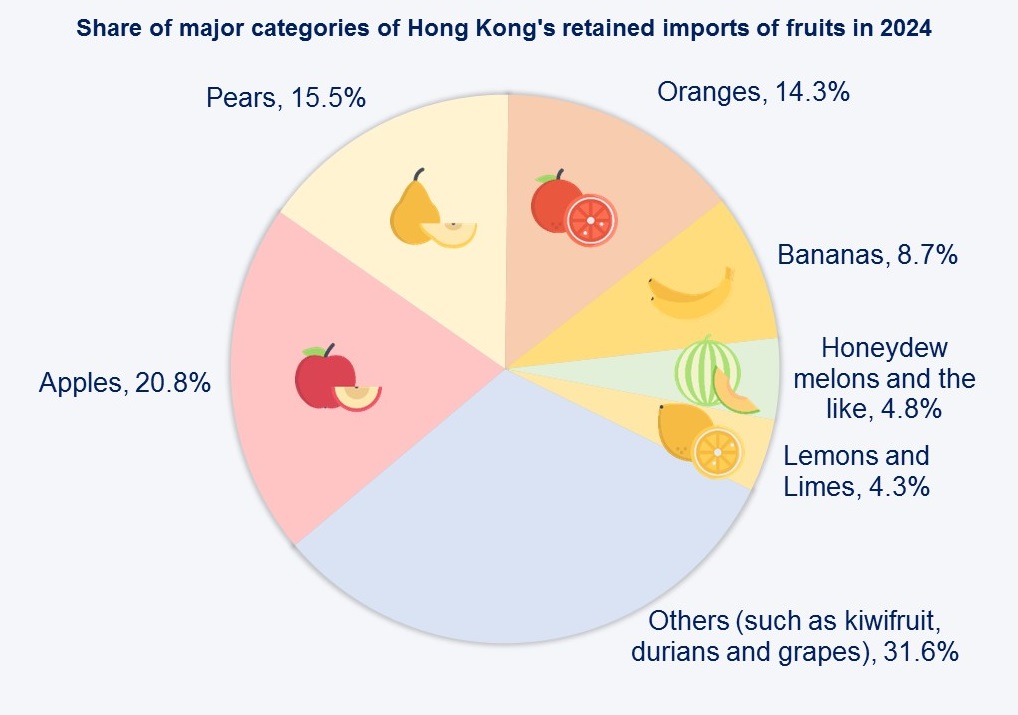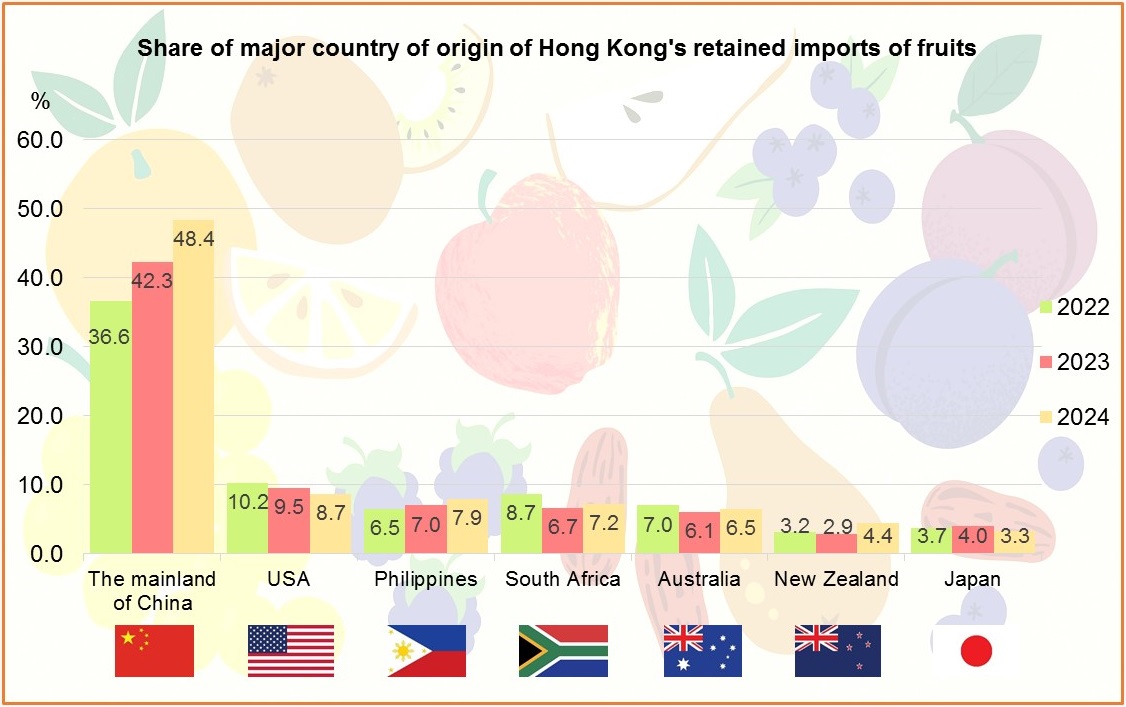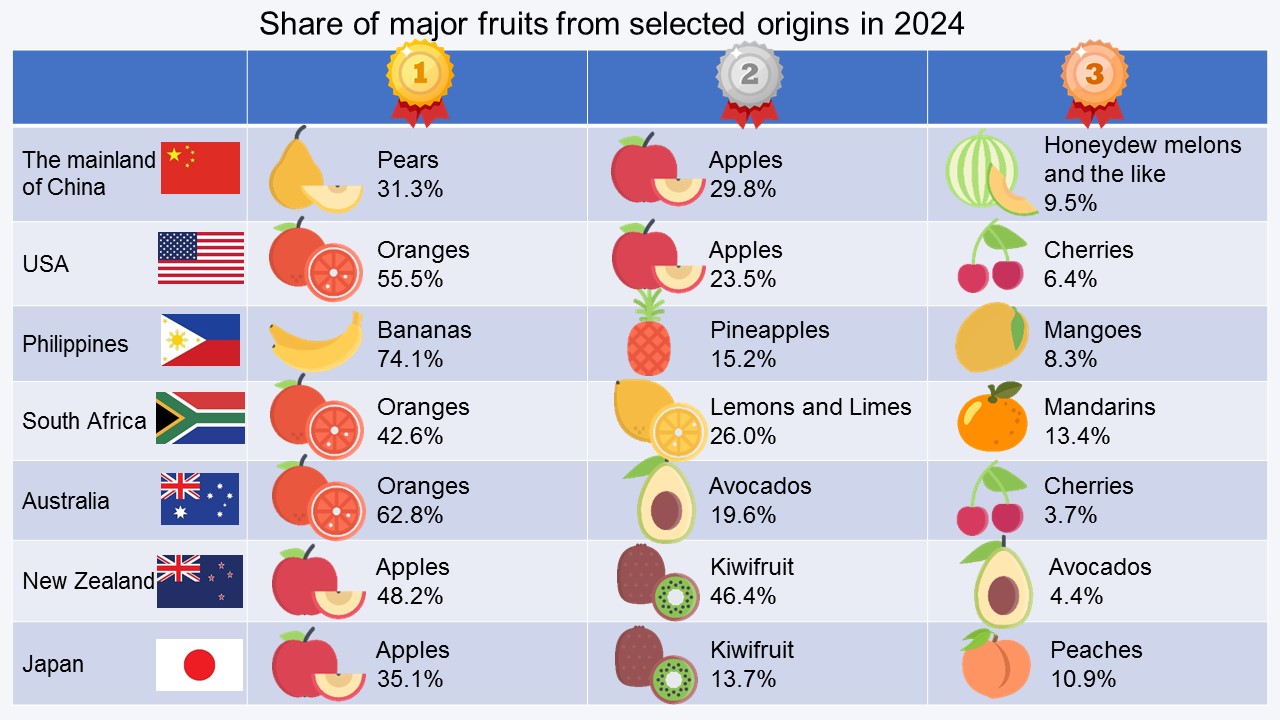Statistical Insights: The Secrets of Fruit Imports in Hong Kong

How much fruit have you eaten this year?
For many years, Hong Kong has relied on imports for most of its fruit supply. Thus, we can estimate our fruit consumption (i.e. the quantity of fruit consumed by locals and tourists in Hong Kong over a specific period) by looking at the volume of retained imports (i.e. imports volume minus re-exports volume). Based on this estimate, in 2024, each person in Hong Kong consumed an average of 71 kilograms of fruit. How does this compare to your daily fruit intake— is it higher or lower?
Apple and Orange, which would you choose?
In 2024, the most popular fruit among Hong Kong citizens was apple, accounting for 20.8% of fruit consumption. Each person in Hong Kong consumed an average of 74 apples (about 200 grams each). Such proportion had highlighted its popularity! Meanwhile, the consumption rankings from second to fourth were pear (15.5%), orange (14.3%), and banana (8.7%). In 2020, orange was still the most loved fruit in Hong Kong, accounting for 23.9% of consumption that year. However, its share had fallen behind apple and pear in 2024.

Fresh Fruits, Straight from the Source
Do you know where the fruit you eat every day comes from? In terms of origin, Chinese Mainland is the largest supplier of fruit to Hong Kong, accounting for 48.4% of retained imports. The United States and the Philippines followed behind, supplying 8.7% and 7.9% of Hong Kong's fruit, respectively. As for Japanese fruits, which have become increasingly popular in recent years, they ranked only seventh in 2024, but their share increased from 2.1% in 2020 to 3.3% in 2024.

The variety of fruits supplied by different sources are diversified. The fruit with the highest retained import volume from Chinese Mainland is pear. On the other hand, orange is the major fruit supplied from the United States, South Africa and Australia. Meanwhile, bananas dominated the fruit imports from the Philippines.

The percentage in the table refers to the percentage share of a fruit among the retained imports of fruits from that country of origin.
Nourish your Body Daily with Fruit, Daily Dose of Fruit for Better Health
It is noteworthy that fruit consumption in Hong Kong appears to be on a downtrend in recent years, dropping from 672 000 tons in 2021 to 538 000 tons in 2024—a decline of 20% in three years. The dietary fiber in fruits aids digestion and prevents constipation and intestinal diseases. Vitamins and minerals can also reduce the risk of diabetes, hypertension, cardiovascular diseases, and certain cancers. Now that you have read this article, would you like to enjoy some delicious fruit right away?
Want to know more about merchandise statistics? Please visit our "Merchandise Trade" for more details.
FONG Hei-lok, James
Statistician
14 February 2025